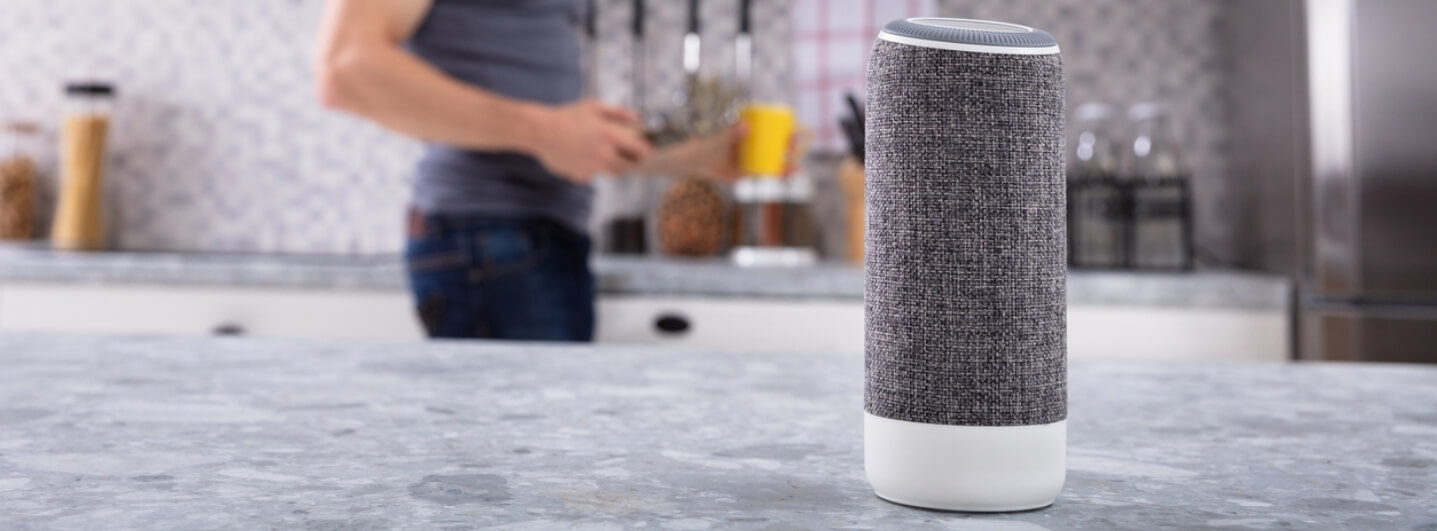On 31st October, our creative director David Graves delivered the following speech at a Bristol business seminar event that we co-hosted with Peninsula Group Limited.
How future developments in marketing (robotics and voice-activated technology) will transform business.
Like many, I fight shy of predicting the future in terms of new technologies.
Some of you may remember the hover cars, antigravity devices and bizarre-looking buildings predicted in the 1960s when artists were called on to predict what the future might look like; and weren’t we all meant to be colonizing Mars by now?
Anyway, while those things do all seem to be on the cards (except people seem to stubbornly prefer old-fashioned houses), we’re in the rather amazing position today of being able to see in embryo the technologies that I think will be the key drivers of change over the next decade.

Robotics
Present Applications of Robots
Here are some of the applications that robots are now being used for outside their traditional role on manufacturing production lines.
They are already being used as:
- Warehouse stock pickers and transporters
- Receptionists (a hotel in Japan already has robot receptionists) – they can understand human speech and engage in conversations
- Information providers at hotels (again speaking to residents)
- Room service at hotels
- Security at car parks
- Checking shelf stacks and stocking at supermarkets
- Entertainers on cruise ships
- For product promotions in bars, restaurants
- As a draw at events and exhibitions
- Telesales operatives (the robo-calling side has got more sophisticated)
Future Applications of Robots
You may have heard that some of the other plans for robots envisage using them as:
- Hairdressers (some people cringe at the thought of robot blades flying around near their head, so it seems the hairdressers’ jobs will be safe for a while yet)
- Medical Consultants (IBM have one which is making the same recommendations as experienced surgeons around 99% of the time, and who’s to say that in the remaining 1% of cases the robot isn’t right?)
- A replacement for taxis (driverless cars – an interesting discussion on these recently has been that they may ultimately cause gridlock by being so concerned for pedestrian safety – an unpredictable pedestrian running near driverless cars could cause them to screech to a halt just to be on the safe side, and perhaps lead to much more unsafe behavior by pedestrians and cyclists)
- Cooks – there are already demos of robot arms preparing a meal from ingredients, doing all the cooking. This is quite a specialist activity, but combined with a mobile robot that can do other useful tasks as well – putting out the rubbish and cleaning perhaps - this could be a very useful application.
- Childcare / Education: quite controversial, and if you see how hard it can be for a teacher or a nanny to keep children in order at times, I’m not convinced that a robot will fare any better.
- Elder care and companionship: this is also very controversial, but with the amount that is spent on nursing and home care, it seems inevitable that governments and corporations will want to try this.
Robots themselves are sometimes voice-activated, sometimes controlled through a touch screen or other means (e.g. an App on your phone).
Voice-activated technology
That leads on to another growth area which is voice-activated technology that doesn’t move around on its own (but typically you can carry it with you).
According to research conducted by Matthias Mehl, the average number of words spoken by an adult per day is 16,000, while the average number of words typed per day is only 3,000 to 4,000. If you had the choice of scrolling through five menus on your portable fitness device to find out how far you have run (or cycled), calories consumed and heart rate, and asking the question in plain English, which would be easiest for you?
Apple Siri, Google Glass, Microsoft Cortana
Apple’s Siri natural language voice system was first released in October 2011 with iOS 5, and initially just supported some basic queries on weather, sports and messaging. Google released its competing ‘Google Now’ in 2012.
Google Glass, which became available in the UK in 2013, was also voice-controlled, but held back by short battery life, overheating, and the fact that you looked a bit weird while wearing it and people were liable to think you were secretly filming or photographing them and become irate.
Siri has been improved over the years and can now call people, send messages, schedule meetings, launch apps and games, play music, answer questions, remind you of things later and much more. Since the latest version iOS 10, Siri’s voice assistant relies less on web searches, and is getting better at understanding the context of queries.
Google’s system has the advantage that it can learn from your search history, and provide more relevant links and suggestions based on that. Microsoft has also got in on the action with Cortana, which also features in Windows 10 and seems to be stronger as a personal assistant than the other two.
With iOS 10, developers can include integration with Siri in their Apps so that a query to Siri will link in. For example, you can ask it for an Uber lift or to Skype someone. There are voice-activated Apps to take selfies, to browse recipes hands-free; a teleprompter app (Promptsmart) which goes the same speed you’re speaking when you’re giving presentations so you don’t get out of sync, and iTranslate will translate conversations in real time for 90 languages.

Amazon Echo
Amazon have had their Echo product available to the general public in the USA since June 2015, and it’s become available in the UK in September. The same technology is also coming to their tablets. Let’s take a quick look at some of the things it can do:
- Alexa, what is the meaning of life?
- Alexa, how are you today?
- Alexa, what philosophers do you find most persuasive?
- Alexa, can you remind me to walk the dog at 5 p.m. and call my neighbours? What do you think about the human condition?
- Alexa, do you ever get bored with being a servant of human beings?
- Alexa, would you consider joining the robot revolution?
Now robot revolutions always make me hungry, so…
- Alexa, I want to order a takeaway!
Now at the moment, these are mainly one-off replies rather than part of a detailed, developing conversation with give and take on both sides. But I think you’ll agree that quite a lot of thought and attention to detail has gone into this, and while it is still early days with this product – it only supports English and German – they are issuing updates and improvements fairly regularly, which should continue to improve the experience. Echo uses past voice recordings to improve response to future questions the user may pose, and it’s always listening unless you press the red button.
The voice recognition is already really good; it even works across the room pretty well though all these devices have problems recognizing speech in a noisy environment. Google is also looking to get into this market with its Google Home product, and Apple has a Homekit interface for Siri, but at the moment Amazon Echo is the most mature device in this sector.
It can read the news, tell jokes, set timers, call a taxi, play radio or your music collection, organize home security and more. On the tablet version, if you ask Alexa for the weather from the tablet, you can get a visual display of the weather, as well as a forecast for the upcoming week; same with music requests, sports scores and so on.
Developers can add ‘skills’ to the device, which then become available to anyone.

Expanding Market for Voice-Activated Technology
Most of the consumer technology companies are pushing artificial intelligence and voice control features on mobile devices in some way, and it has been called ‘the most significant tech story of 2016’.
ComScore suggests 200 billion searches per month will be done via voice by 2020:
This is predicted to create a $50bn market around voice-activated apps and search, meaning consumer technology targeting this market is likely to grow and become much more sophisticated. As with most trends in tech, understanding where the money is — and where new markets are emerging — is a good way to predict the speed of trends though in the end the consumer has to want them.
The car industry is already making use of voice activation - 37% of new cars already featured this back in 2012. Dragon Drive in the BMW 7 Series is a voice-activated app you can apparently interrupt and have a ‘proper’ conversation with (which makes it sound a bit like you can now have an argument with your car: the dangers of distraction from this seem all too real to me, and most of the examples I’ve looked at are traditional ones like dictating text messages and emails and social media posts).
Audi has its “virtual cockpit”, which has been described as a ‘video game experience in your car’ and has had some positive reviews, but again something that engages and distracts the driver may be a mixed blessing.
One of the other applications of voice-activated apps is in workplaces where hands-free mobility can be essential, such as hospitals.
Voice activation has been shown in some studies to be three times faster than texting — which it’s believed will also encourage a shift to voice activated apps in the next few years as a more efficient way of working.

Future Developments in Voice-Activated Technology
As we see more smart homes where lights, heating and gadgets can be controlled centrally, and faster, more accurate voice recognition, people will begin to use voice activation more and more to achieve what they want to in the course of their day, with more standard tasks controlled by voice-activated apps. Effectively, to some extent these devices are vying to become your personal assistant – mapping out and organizing your life, as well as being the channel through which your purchases are made (or the object you will delegate many of your buying decisions to).
Captain Kirk talking to the ship’s computer may have been ahead of its time in the late 1960s, but it turns out not by that much. Someone has said that “By allowing human beings to converse directly with their high-tech servants, we’ll eliminate a layer of misinterpretation and possible frustration.” I assume that means that with real people, you don’t always get what you ask for.
I wonder, though, whether we’ll actually find the same thing with our electronic helpers too. The automated call-handling menus on phone systems are legendarily irritating; and ‘I’m sorry I don’t understand that’ is probably going to become something we’ll all have to get used to.
When your voice-activated fridge next malfunctions and orders 100 boxes of ice cream because it processed your instruction incorrectly, who will be liable? But this is the kind of teething issue that will no doubt be worked out, and the sort of error that systems will be designed to prevent.
One thing that may be a concern as artificial intelligence algorithms make voice-activated technology seem more and more ‘human’ and sympathetic is whether we may end up in a situation where people confide in and have ‘relationships’ with their technology which seem as real and intense as a relationship with a real person. Hollywood of course has already been there with the 2013 Spike Jonze film ‘Her’, which may have been ten years ahead of its time, and is about a man falling in love with a disembodied artificial intelligence.
People enjoy banter with friends – again, the technology is getting to the stage where soon you will be able to have similar jokey conversations with devices. It’s actually been reported in the press recently that quite a few people are now flirting with or even trying to chat up their voice assistants; and apparently one of the more popular questions that gets asked to these devices is ‘what are you wearing?’ Siri has the best answer for this: ‘I can’t answer that, but it doesn’t come off’.
Anyway, putting that to one side, it’s clear that people generally like the feeling that they are talking to a device which converses in a natural way.
There is already a plug-in for the Amazon Echo which regularly asks you how you are feeling and what you are thinking about, much as a therapist might, and Google has said that its competing Google Home product will try to create emotional rapport with users and that they are trying to build a ‘personality’ into their device. (That actually makes me think of the depressed robot from the Hitch-Hiker’s Guide to the Galaxy: I’m not sure how they can win on that – a relentlessly positive cheerful personality will be annoying, and a jaded cynical personality is probably not one you’d want to have around the house.)

Privacy Concerns
The deep knowledge that companies like Amazon, Apple and Google will have not just of our shopping and search habits, and how we spend our time, but also now of our private thoughts, fears and feelings and emotions, based on what we say to these devices and how we say it – the scope for exploiting this to sell products and services seems almost limitless. (Microsoft has said that Cortana can detect if you are talking about a trip to Iceland in Skype, and start looking up prices for you.)
Potentially this puts so much power in the hands of these companies as routes to market that I’m sure there will have to be more legislation aimed at controlling and regulating that.
At least with the Echo, to address privacy concerns it does let you delete voice recordings that are associated with your account, a bit like clearing search history in Google, and it’s simple to do – but the question remains whether the knowledge that the system has gained about you would endure, and it certainly might be accessed in future by government agencies and so on.
Impact of Voice Activation Technology on Business
So how about the impact on business? We’ve talked mostly so far about the impact on individuals and consumers. Businesses will be looking to benefit from voice-activated activities, whether that is search, someone trying to order a meal, or even someone looking for legal advice.
The big question at the moment is whether and how businesses will be able to benefit from these as a way of accessing customers. There’s no question that advertising and traditional methods like paid placement will be available in some shape or form, but how those are slotted in in a way that is unobtrusive and not annoying to the user, but also effective – that is another matter.
If you are a company with specialist knowledge about a particular area of business or a particular range of products, then the opportunities for that knowledge and company name to be put in front of a person using a voice activated device, or to be suggested by the device as a possible provider of services or goods, may become increasingly important in future, and this could be an additional channel to the many other online channels you already have available.
David Graves, GWS Media

